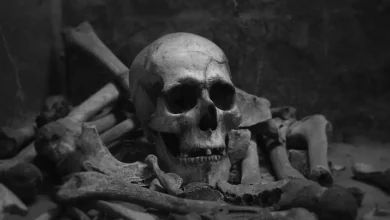Jerusalem is perched on its rocky elevations. It’s a geographical crossroads where religions meet and conflicts intertwine. Here:
- The Muslim family visits the Noble Sanctuary (also known as the Temple Mount), which is home to the Dome of the Rock and the Foundation Stone, a central centre of spiritual narrative.
- The Western Wall is revered by the Jewish Family as the last remaining structure of the Second Temple.
- The Christian Family is seeking solace in the Church of the Holy Sepulchre. This church is revered for being the site of Jesus’ crucifixion and burial.
But geography is more than a sacred devotion. It’s shaped by the history of conquests and crusades. Peace wrapped in tension. These legendary sites contain chambers filled with memory and myth.

Muslim Pilgrimage – Under the Golden Dome
The Dome of the Rock is the third most holy site for Muslims after Mecca and Medina. This structure is the oldest Islamic monument, and it’s perched on the Temple Mount. It was built in the 7th century by the Umayyad Caliph.
Under the Dome, the Foundation Stone hovers above the Well of Souls a subterranean cave steeped with eschatological legend. The stone is said to float over the ancient abyss that held the Flood’s waters, and some people believe the echoes of the dead awaiting judgment echo in the cavern.
Imagine a family of four walking across a mosaic floor, breathing in centuries of prayer, longing, and stories of creation, the ascension and cosmic connection. Each step is guided by these stories.
Jewish Faith: Prayers written in Stone
The Jewish family passes through the Western Wall Plaza, a lively courtyard that attracts thousands of people during festivals like Passover. In one Passover event, over 200,000 people attended the Birkat Cohanim. This added a contemporary layer to ancient stones.
The Wall is more than just masonry. It is also a conduit for prayer. Visitors of all faiths whisper their hopes in the crevices, believing that the divine is residing within those stones. Every year, over a million coins are placed into its cracks and buried with reverence.
Here, the child is reading a prayer card while her grandmother touches the surface. She feels a connection with centuries of prayer. This is not just a pilgrimage, but a living tapestry that reflects memory, grief, and continuity.
Christian Reverence – From Stone Quarry to Sacred Sanctuary
The route of the Christian family winds through the labyrinthine inside of the Church of the Holy Sepulchre, a place rich in tradition, division and devotion. The church is located in the old city quarters, and its architecture represents the intersection of Christian denominations.
It is a space that remains undisputed under the complex status quo agreement. This agreement is embodied by the iconic immovable ladder, which has not been moved for centuries and represents the unsettled ownership but shared veneration.
They climb the stairs inside to Calvary (Golgotha), which is divided into Greek Orthodox chapels and Catholic Chapels that mark each station of the Crucifixion. Below is the Chapel of Adam. It’s believed that Adam, the first human being, rests atop this chapel.
The church has a rich history, with archaeology revealing that it was once an ancient quarry and later repurposed as a worship space.
The family is kneeling in front of an altar and looking for forgiveness, spiritual connection, and a bright future.

Shared Stones, divided stories
The geography of these families is what unites them: they are all close but separated by religion, tradition and politics. Jerusalem’s holy terrain is a stage for coexistence and conflict as well as sacred longing.
The Temple Mount/Al-Haram al-Sharif has been a source of controversy around the world. It is a place that is restricted to Jews despite its historical significance and is held together by authority and caution.
The Western Wall, a cornerstone of Jewish identity, inspires unity while also creating tension. The walls of the Western Wall are quiet, but they speak louder than any war.
Holy Sepulchre is split into two but shared by all. It reflects the broken unity that lies at the heart of Christianity. The ladders and shrines in the Holy Sepulchre are metaphors, etched into stone. They represent relationships of division yet divine unity.
Finale: Peace and Pilgrimage in Stone
In Jerusalem’s Holiest, we see more than just devotion. We see the meaning of centuries-old stones being kneaded out by flesh, heart, and feet.
These families, each walking a different road but ending up on the same worn path, offer a glimpse at the possibility: that human geography, layered with religion, can be rooted in empathy and understanding.
Jerusalem is more than a city. Jerusalem is a city, but it’s also a people–past and present, bound together by memories, longings, and steadfast faith. The stillness of hope is found in the silence of prayer at the Wall, beneath the Dome or in the reverence of the Sepulchre.




